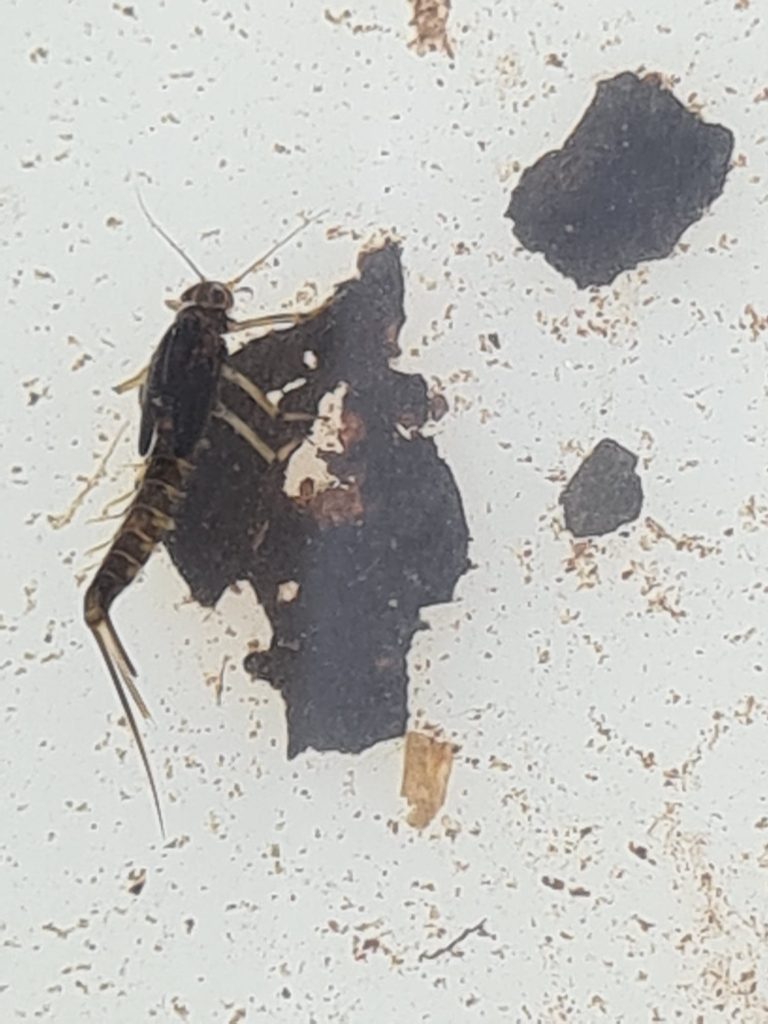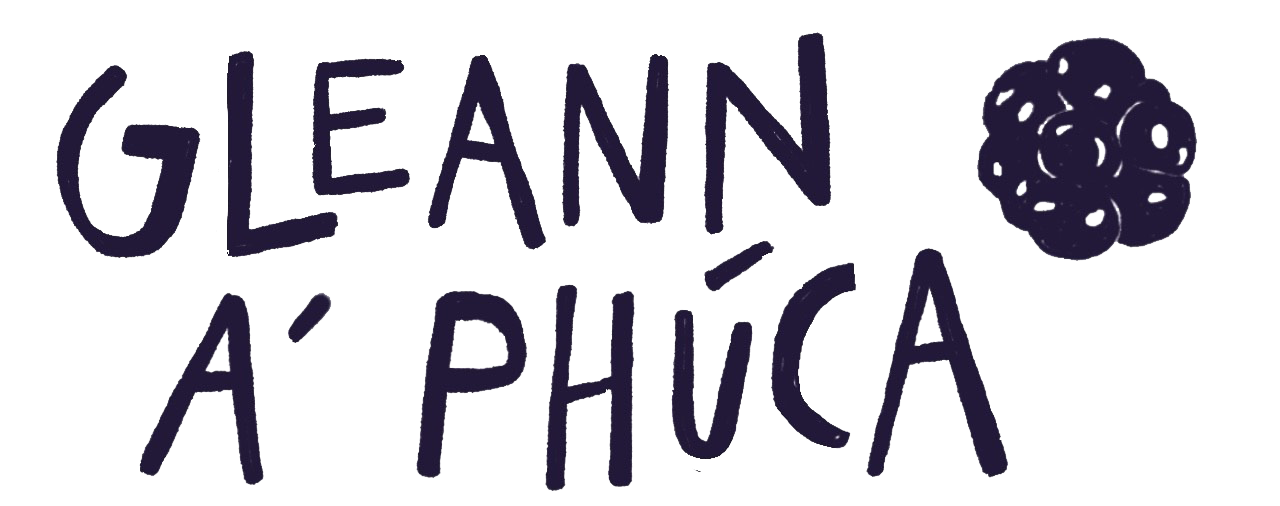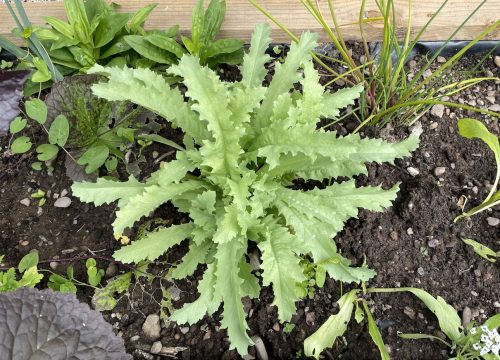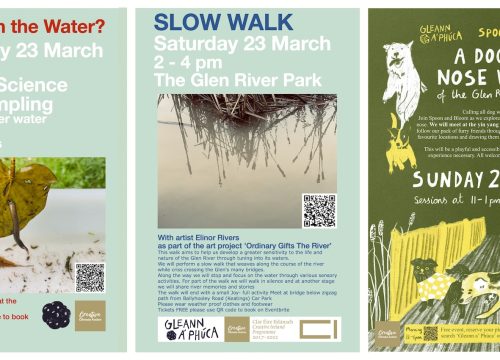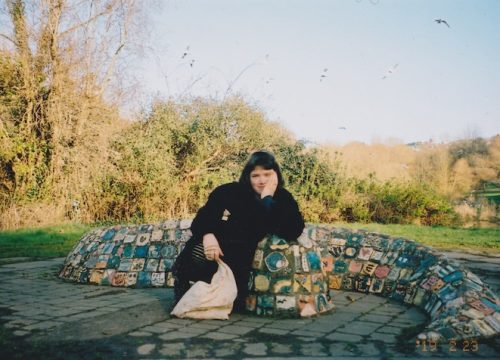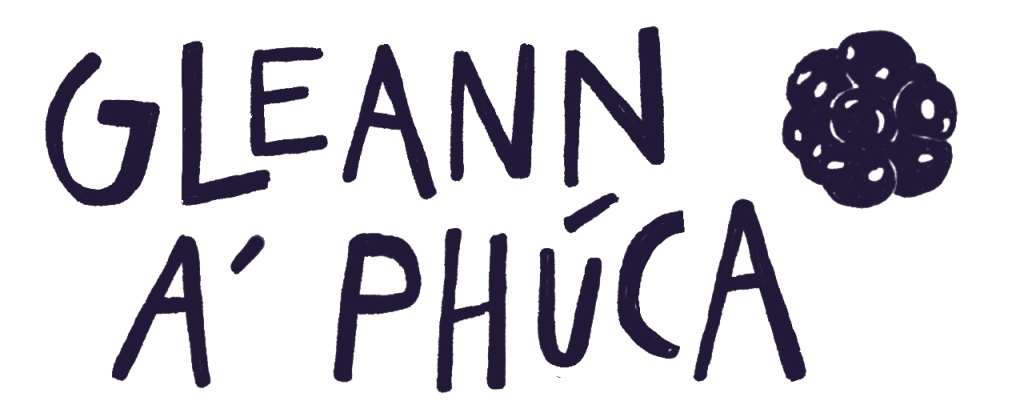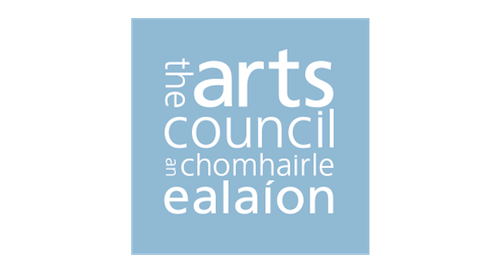What did we find in the water?
There were cold showers and sunny spells we got the best of it. All in our wellies in the muddy banks and in the water. Catherine Seale and Trish O’Brien from the Local Water authority brought us into the water.
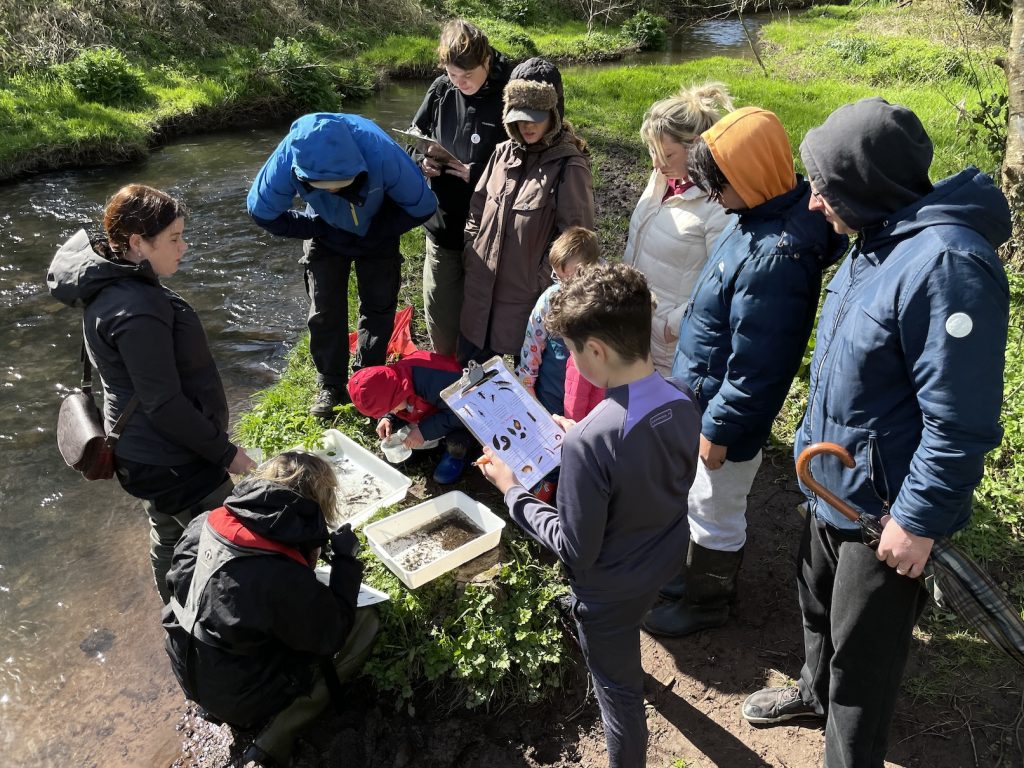
We watched Trish skiffle the gravel in her waders, feet dislodging the surface, we were looking for fast moving water over gravel showing a rippled surface, this is where the creatures will be most at home. We had some very enthusiastic young scientists among us who recorded what we found.
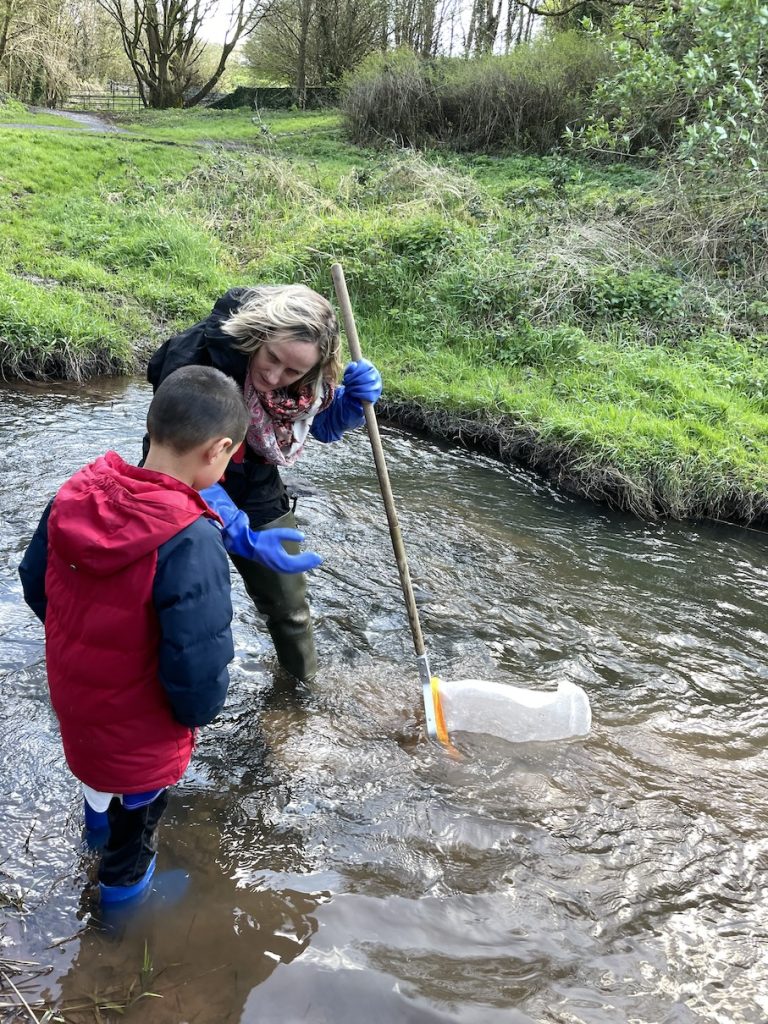
Water catchment scientist informed us on how to look for riffles – whcih indicate fast flowing water over gravelly river bottoms
We took 3 samples from different places. the net scoops the place downstream from the skiffled river bed. We found glamerous gammerus – tiny river prawns, we found just one water louse – a good thing as this is an indicator for “biological’ nutrients – raw sewage. We found Caddis fly larva, stonefly and Mayfly – sadly not the flattened kind which, being so extremely sensitive would have been a sure sign for healthy water. We found leeches.
see the leech latched onto the container here
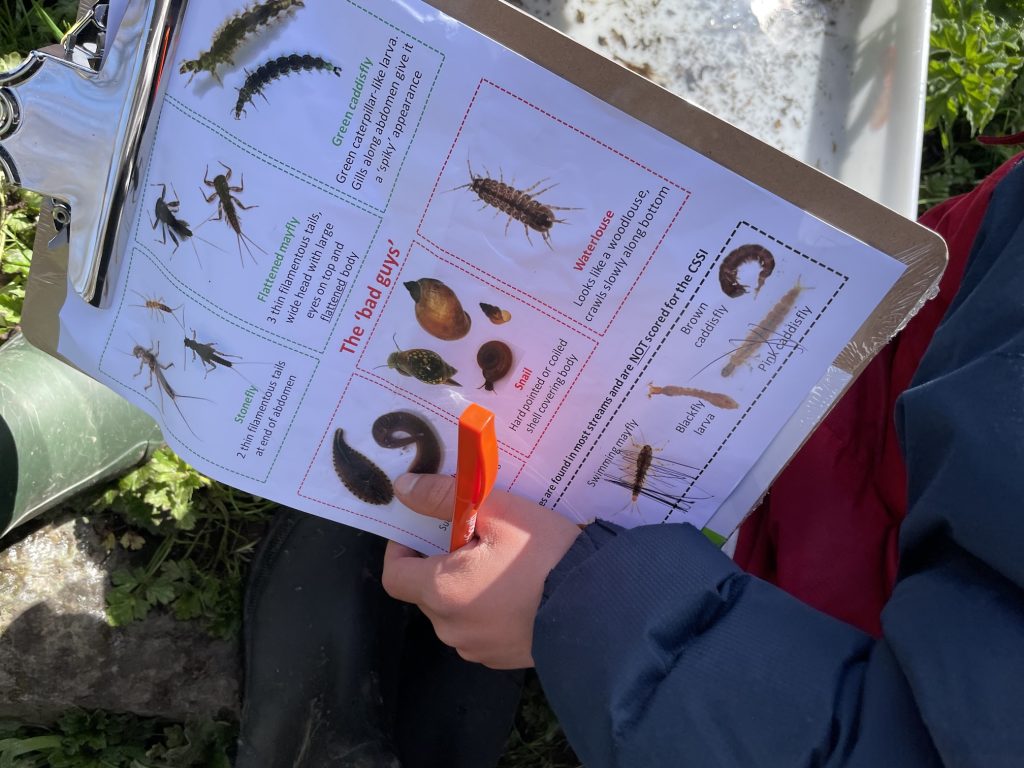
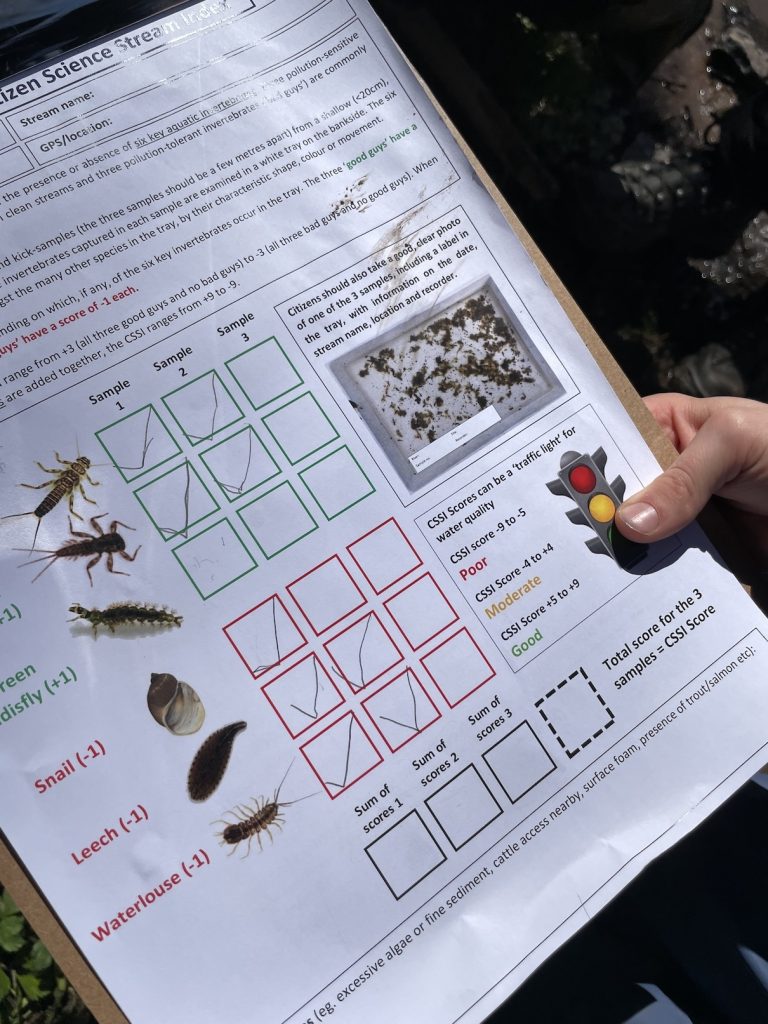
We documented our findings weighing up the “bad guys” against the “good guys” and the water quality came up as -4 which counts as a moderate indictator – ie. for water that isn’t super polluted but had s a long way to go before it can qualify as healthy. Trish and Catherine advised us to document the days and times of day when the water turns coloured, or smells strongly chemical, this kind of observant and on the ground citizen science will help agencies- like the City Council and like the Environmental Protection Agency identify and address the different pollutants that are going into the water. There are probably hundreds of household drains that flow into the storm drains and feed directly into the river.
